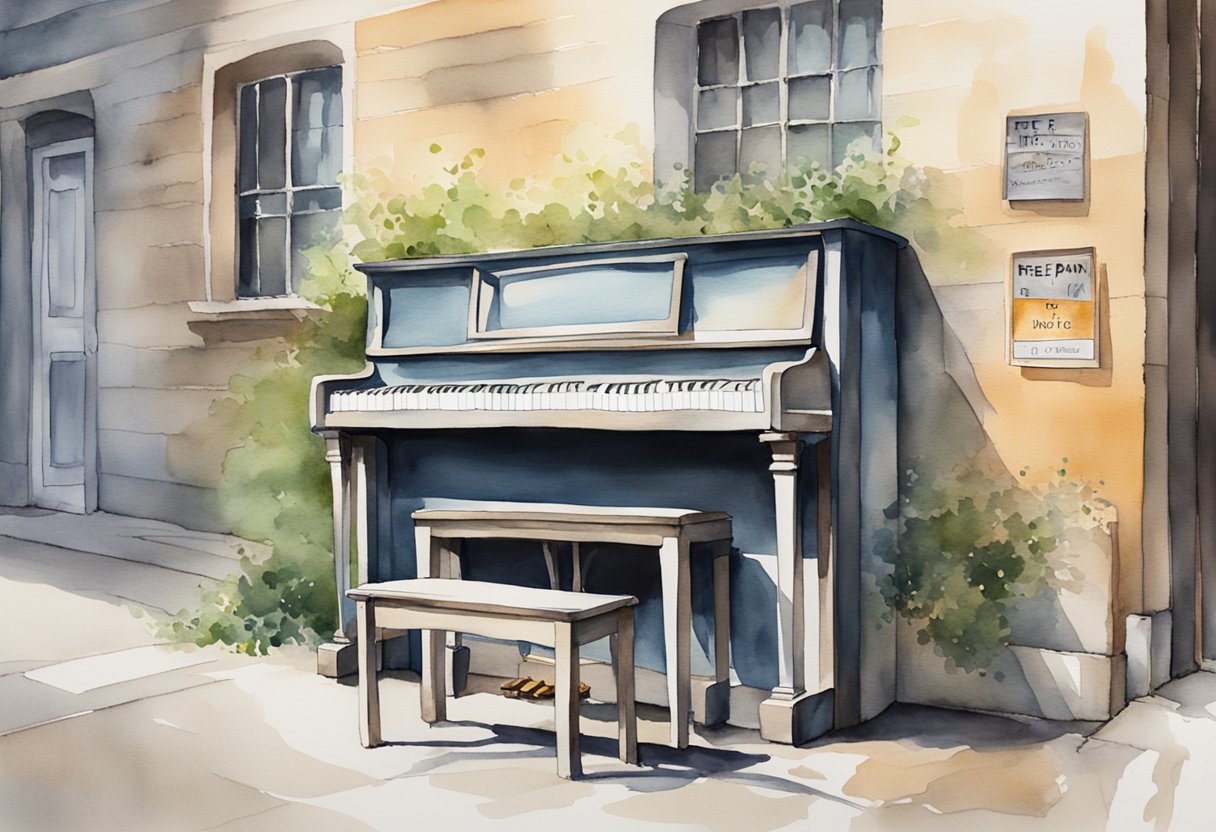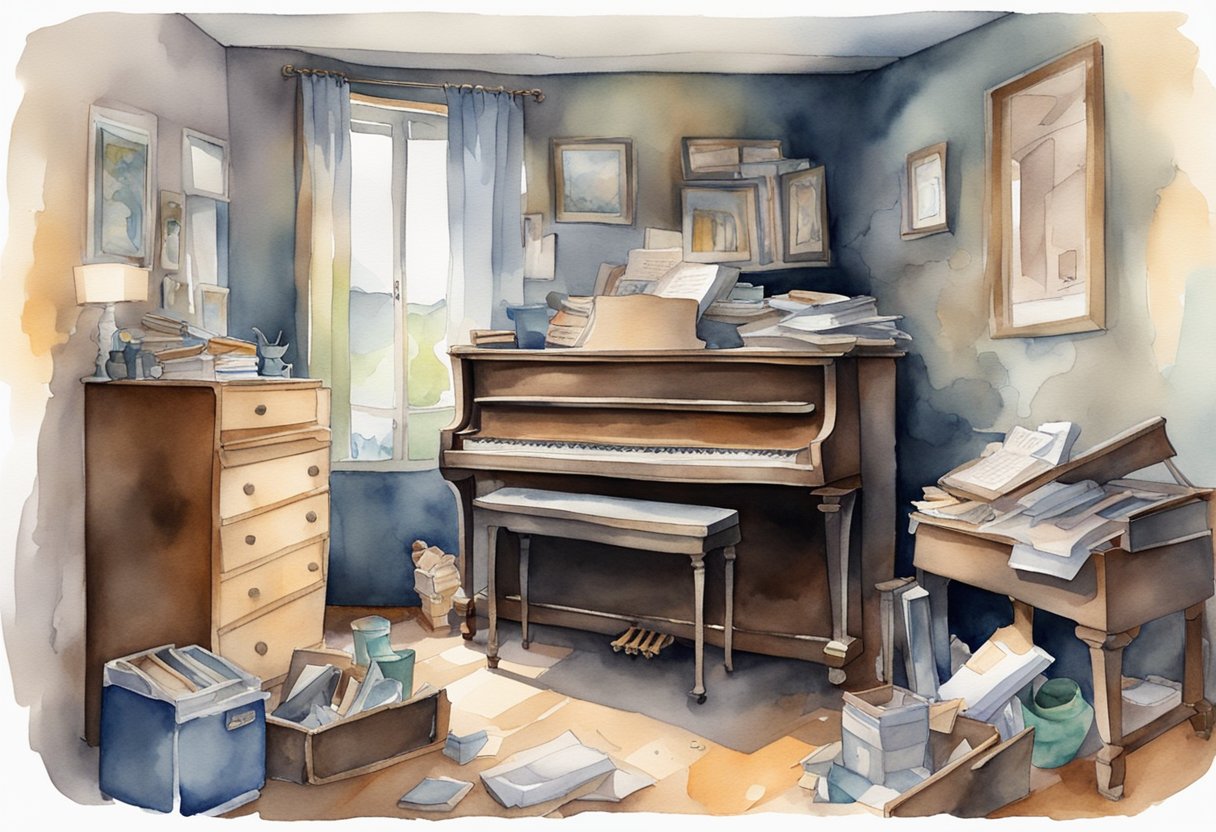As an Amazon Associate I earn from qualifying purchases.
At first glance, the prospect of acquiring a free piano can seem like a stroke of luck, offering a gateway to explore musical creativity without the hefty price tag of a new or used instrument.
From my experience, enthusiastic beginners or individuals on a budget have been lured by the idea, dreaming of the melodies they could create once the piano is theirs. However, what seems to be an extraordinary find can sometimes lead to unexpected expenses and challenges that may not align with the concept of a valuable investment.
Want to Learn Piano?Click Here

When considering a free piano, you must weigh the initial savings against potential costs down the line. I remember one instance when a student of mine joyfully accepted a free piano from a local ad, only to be met with substantial repair bills due to neglected maintenance — costing more than if they had purchased a moderately priced, pre-owned piano.
If you’re pondering over whether to bring home a piano for no cost, think about the decision as you would any other significant investment. It’s essential to examine the instrument’s condition, understand its history, and be prepared for the possibility of investing in its restoration. Sometimes, what is presented as free can indeed seem pricey if thorough consideration isn’t given to the actual shape of the piano and the expenses involved in tuning, repairs, and transport. As you weigh your options, remember that a free piano isn’t merely an object but a commitment to an instrument that is central to your musical journey.
Evaluating the True Cost of Free Pianos

When you’re considering a free piano, remember that the initial cost is just the beginning. Proper evaluation of its true value, potential additional expenses, and long-term maintenance is crucial for making an informed decision.
Understanding the Value of a Piano
A piano isn’t just an instrument; it’s a complex piece of craftsmanship. Its value can be assessed by factors like brand, age, condition, and model.
Before you accept a free piano, it’s wise to research its background and consult a reputable piano technician who can offer insights into the piano’s worth and potential.
Potential Repair and Tuning Expenses
Don’t be surprised if your free piano requires tuning or repairs. Over time, pianos can develop issues with strings, felts, and action mechanisms, and out-of-tune pianos can severely affect the piano sound.
Repairing or replacing parts could incur costs, sometimes tallying hundreds or even thousands of dollars, depending on the extent of work needed to restore its functionality and sound quality.
Moving and Logistics Considerations
The process to move a piano is no small feat. Pianos are cumbersome and delicate, necessitating professional piano movers to ensure safety.
The moving cost can be quite substantial, especially for larger instruments or when navigating stairs or long distances. It’s important to factor in these logistical expenses when deciding the real cost of the piano.
Long-Term Maintenance for Piano Upkeep
After the move, the expenses aren’t over. Regular maintenance is the key to preserving the piano’s tone and playability. This includes periodic tuning, which typically should occur at least twice a year, and possibly more often for a piano that hasn’t been maintained.
Long-term upkeep may also involve climate control in the room where the piano is housed to protect its wooden components from warping. Establishing a relationship with a local piano restoration shop can help you budget for these future costs.
Making an Informed Decision About Free Pianos
When considering a free piano, it’s essential to evaluate its suitability for your needs, weigh it against your budget constraints, and understand when investing in a paid piano might be the better choice.
Assessing Whether a Free Piano Suits Your Needs
to consider. First, ask yourself what purpose the piano will serve. Are you a beginner looking for a practice instrument, or do you need a quality acoustic piano for professional use?
Remember, the sound quality of old pianos found on platforms like Craigslist or Facebook Marketplace can vastly differ, and many may be out of tune or in need of regulation.
A free piano may seem like a good deal, but it could potentially belong to a high-caliber brand like Steinway, requiring extensive piano restoration work. Evaluate the condition honestly—sometimes having a technician assess the instrument can save you future headaches.
Finding a Decent Piano Within Your Budget
Setting a realistic budget is key. While free is appealing, the repair cost or a necessary overhaul to get the sound qualityup to par might exceed what you would spend on a decent used piano. If you’re on a tight budget, consider looking for affordable upright pianos.
These can often offer a middle ground between costly grand pianos and the uncertainties that come with free, old pianos.
Keep in mind:
- Free pianos might have hidden costs that add up.
- A relatively affordable used piano might be a better financial decision in the long run.
- Consult with a technician beforehand to estimate potential costs.
When to Opt for a Paid Piano Instead
In some cases, investing in a paid piano is more prudent than accepting a free one. If you dream of owning a high-quality instrument without the surprise expenses, saving up for a piano might be the wiser choice.
For serious students and musicians, investing thousands of dollars in an instrument that will last and perform consistently is not uncommon, nor is it unreasonable. Digital pianos can also be a great alternative, offering steady sound quality without the need for tuning and at a fraction of the price of an acoustic.
Remember:
- Digital pianos—a practical option for those starting on a tight budget.
- Used pianos can sometimes be a good deal; research is essential.
- Free isn’t always free—in considering a beginner piano, look beyond the price tag.
Hello & thanks for stopping by! I’m a professional concert pianist and piano instructor. In the United States, I’ve given successful performances in several places including New York, Florida, Connecticut, & New Jersey, I have also performed internationally in Italy and made my Carnegie Hall debut in 2014. I enjoy blogging about the piano, the art of performance, general music, current events and the latest in music production.
